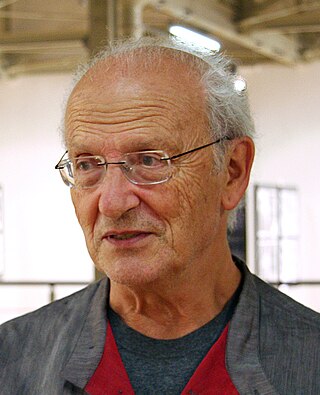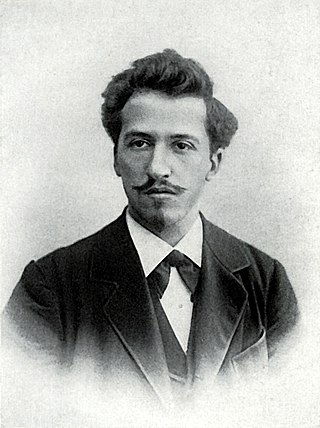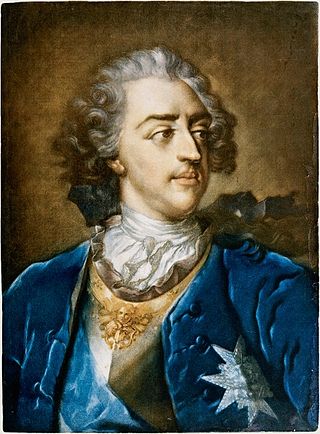
A pastel is an art medium that consist of powdered pigment and a binder. It can exist in a variety of forms, including a stick, a square, a pebble, or a pan of color, though other forms are possible. The pigments used in pastels are similar to those used to produce some other colored visual arts media, such as oil paints; the binder is of a neutral hue and low saturation. The color effect of pastels is closer to the natural dry pigments than that of any other process.

Vincent Willem van Gogh was a Dutch Post-Impressionist painter who is among the most famous and influential figures in the history of Western art. In just over a decade, he created approximately 2100 artworks, including around 860 oil paintings, most of them in the last two years of his life. His oeuvre includes landscapes, still lifes, portraits, and self-portraits, most of which are characterized by bold colors and dramatic brushwork that contributed to the rise of expressionism in modern art. Van Gogh's work was beginning to gain critical attention before he died from a self-inflicted gunshot at age 37. During his lifetime, only one of Van Gogh's paintings, The Red Vineyard, was sold.

Wassily Wassilyevich Kandinsky was a Russian painter and art theorist. Kandinsky is generally credited as one of the pioneers of abstraction in western art. Born in Moscow, he spent his childhood in Odessa, where he graduated from Odessa Art School. He enrolled at the University of Moscow, studying law and economics. Successful in his profession, he was offered a professorship at the University of Dorpat. Kandinsky began painting studies at the age of 30.

Jean Henri Gaston Giraud was a French artist, cartoonist and writer who worked in the Franco-Belgian bandes dessinées (BD) tradition. Giraud garnered worldwide acclaim predominantly under the pseudonym Mœbius for his fantasy/science-fiction work, and to a slightly lesser extent as Gir, which he used for the Blueberry series and his other Western themed work. Esteemed by Federico Fellini, Stan Lee, and Hayao Miyazaki, among others, he has been described as the most influential bande dessinée artist after Hergé.

The Scream is a composition created by Norwegian artist Edvard Munch in 1893. The Norwegian name of the piece is Skrik (Scream), and the German title under which it was first exhibited is Der Schrei der Natur. The agonized face in the painting has become one of the most iconic images in art, seen as symbolizing the anxiety of the human condition. Munch's work, including The Scream, had a formative influence on the Expressionist movement.

De Stijl, incorporating the ideas of Neoplasticism, was a Dutch art movement founded in 1917 in Leiden, consisting of artists and architects. The term De Stijl is also used to refer to a body of work from 1917 to 1931 created in the Netherlands. Proponents of De Stijl advocated pure abstraction and universality by a reduction to the essentials of form and colour. They simplified visual compositions to vertical and horizontal, using only black, white and primary colors.

Richard Prince is an American painter and photographer. In the mid-1970s, Prince made drawings and painterly collages that he has since disowned. His image, Untitled (Cowboy), a photographic reproduction of a photograph by Sam Abell and appropriated from a cigarette advertisement, was the first rephotograph to be sold for more than $1 million at auction at Christie's New York in 2005. He is regarded as "one of the most revered artists of his generation" according to The New York Times.

Anselm Kiefer is a German painter and sculptor. He studied with Peter Dreher and Horst Antes at the end of the 1960s. His works incorporate materials such as straw, ash, clay, lead, and shellac. The poems of Paul Celan have played a role in developing Kiefer's themes of German history and the horrors of the Holocaust, as have the spiritual concepts of Kabbalah.

Lucebert was a Dutch artist who first became known as the poet of the COBRA movement.

Tree shaping uses living trees and other woody plants as the medium to create structures and art. There are a few different methods used by the various artists to shape their trees, which share a common heritage with other artistic horticultural and agricultural practices, such as pleaching, bonsai, espalier, and topiary, and employing some similar techniques. Most artists use grafting to deliberately induce the inosculation of living trunks, branches, and roots, into artistic designs or functional structures.

Pieter Cornelis Mondriaan, after 1906 known as Piet Mondrian, was a Dutch painter and art theoretician who is regarded as one of the greatest artists of the 20th century. He is known for being one of the pioneers of 20th-century abstract art, as he changed his artistic direction from figurative painting to an increasingly abstract style, until he reached a point where his artistic vocabulary was reduced to simple geometric elements.

Frans Wildenhain also known as Franz Rudolf Wildenhain was a Bauhaus-trained German potter and sculptor, who taught for many years at the School for American Craftsmen at the Rochester Institute of Technology in Rochester, New York.

Jacob Christoph Le Blon, or Jakob Christoffel Le Blon, was a painter and engraver from Frankfurt who invented a halftone color printing system with three and four copper dyes using an RYB color model, which served as the foundation for the modern CMYK system. He used the mezzotint method to engrave three or four copper plates to make prints of paintings and portraits with a wide range of colors.
N. N. Rimzon is an Indian artist known primarily for his symbolic and enigmatic sculptures. His metal, fiberglass and stone sculptures have won him international acclaim, though in recent years his drawings have gained recognition.
Susan Dorothea White is an Australian artist and author. She is a narrative artist and her work concerns the natural world and human situation, increasingly incorporating satire and irony to convey her concern for human rights and equality. She is the author of Draw Like da Vinci (2006).

Acer palmatum, commonly known as Japanese maple, palmate maple, or smooth Japanese maple (Korean: danpungnamu, 단풍나무, Japanese: irohamomiji, イロハモミジ, or momiji,, is a species of woody plant native to Korea, Japan, China, eastern Mongolia, and southeast Russia. Many different cultivars of this maple have been selected and they are grown worldwide for their large variety of attractive forms, leaf shapes, and spectacular colors.

Van Gogh's family in his art refers to works that Vincent van Gogh made for or about Van Gogh family members. In 1881, Vincent drew a portrait of his grandfather, also named Vincent van Gogh, and his sister Wil. While living in Nuenen, Vincent memorialized his father in Still Life with Bible following his death in 1885. There he also made many paintings and drawings in 1884 and 1885 of his parents' vicarage, its garden and the church. At the height of his career in Arles he made Portrait of the Artist's Mother, Memory of the Garden at Etten of his mother and sister and Novel Reader, which is thought to be of his sister, Wil.

Trude Guermonprez, was a German-born American textile artist, designer and educator, known for her tapestry landscapes. Her Bauhaus-influenced disciplined abstraction for hand woven textiles greatly contributed to the American craft and fiber art movements of the 1950s, 60s and even into the 70s, particularly during her tenure at the California College of Arts and Crafts.

Virgil Abloh was an American fashion designer and entrepreneur. He began his own line of luxury streetwear clothing, Pyrex Vision, in 2012, and became the chief executive officer of the Milan-based label Off-White, a fashion house he founded in 2013. Abloh was also the artistic director of Louis Vuitton's menswear collection beginning in 2018, and was given increased creative responsibilities across the LVMH brand in early 2021.
Sigmund Abeles is an American figurative artist and art educator. His work embodies the "expressive and psychological aspects of the human figure; an art focused on the life cycle." He taught art for 27 years at various institutions including Swain School of Design, Wellesley College, Boston University, the National Academy, and the Art Students League of New York. Currently Professor Emeritus at the University of New Hampshire, Abeles works full-time in his NYC and upstate NY studios. He is the recipient of numerous grants and awards for printmaking, drawing, painting, and sculpture, including Pastel Society of America Hall of Fame honoree in 2004 and most recently the Artists' Fellowship 2017 Benjamin West Clinedinst Medal. His work can be found in many public institutions including the Museum of Fine Arts, Boston, Art Institute of Chicago, Metropolitan Museum of Art, Philadelphia Museum of Art, and the Whitney Museum of American Art. Abeles was one of three artists featured in Manfred Kirchheimer's 2012 feature-length independent film Art Is... The Permanent Revolution, on the history of the art of protest in prints.
















